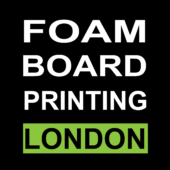Understanding Foam Board Thickness and Its Applications
Foam board, also known as foamcore, is a versatile material widely used in various applications such as signage, displays, and architectural models. It is known for its lightweight nature, rigidity, and ease of handling. Understanding the thickness of foam board and its impact on different uses is essential for making informed choices in projects requiring this material.
What is Foam Board?
Foam board consists of a core of foam sandwiched between two layers of paper or plastic. The core is usually made from polystyrene, which gives the board its lightweight and insulating properties. The outer layers can vary in thickness and material, providing different levels of durability and surface finish. Foam board is commonly available in a range of thicknesses, which significantly affects its strength and suitability for various applications.
Common Thicknesses
Foam board typically comes in thicknesses ranging from 3/16 inch (approximately 5 mm) to 1 inch (approximately 25 mm). The most common thicknesses are 1/8 inch (approximately 3 mm), 1/4 inch (approximately 6 mm), and 1/2 inch (approximately 12 mm). Each thickness offers different benefits and is suited to specific uses:
- 3/16 Inch (5 mm): This is a thinner foam board, often used for lightweight applications such as temporary displays and models. It is easy to cut and handle but may not provide sufficient rigidity for more demanding tasks.
- 1/4 Inch (6 mm): Slightly thicker, this foam board is a popular choice for presentations, signage, and mounting photographs. It offers a good balance between rigidity and weight, making it suitable for a variety of applications.
- 1/2 Inch (12 mm): This thickness provides greater strength and durability. It is ideal for more permanent displays, architectural models, and any application where additional rigidity is required. It can support more weight and resist bending better than thinner options.
- 1 Inch (25 mm): This is the thickest standard foam board, offering maximum rigidity and durability. It is used in situations where a robust and sturdy board is essential, such as large-scale signs, structural models, and heavy-duty applications.
Choosing the Right Thickness
Selecting the appropriate thickness of foam board depends on the specific requirements of the project. Factors to consider include:
- Weight and Rigidity: Thicker foam boards provide more rigidity and can support heavier items. For projects requiring significant support or structural integrity, opting for a thicker board is advantageous.
- Purpose of Use: For temporary or lightweight applications, thinner foam boards are often sufficient. However, for long-term or high-impact uses, a thicker board offers better performance and durability.
- Ease of Handling: Thicker boards can be more challenging to cut and handle, so consider the ease of working with the material when choosing the thickness.
Conclusion
Foam board thickness plays a crucial role in determining its suitability for various applications. With thickness options ranging from 3/16 inch to 1 inch, users can select the right foam board based on the project’s requirements for weight, rigidity, and durability. Thinner boards are suitable for temporary and lightweight uses, while thicker boards provide the strength needed for more demanding applications. Understanding these options ensures that you choose the best foam board for your specific needs, leading to more effective and successful outcomes in your projects.
